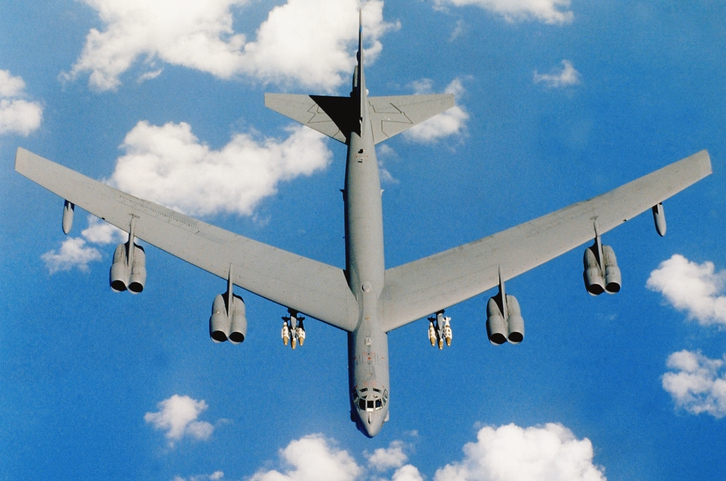
The Boeing B-52, referred to by pilots as the “Buff,” was the first aircraft capable of carrying a nuclear bomb nonstop around the world, and has been the backbone of the U.S. Air Force for more than five decades. Measuring 159 feet, 4 inches from nose to tail, the combat bomber can carry a 10,000-pound payload at speeds reaching 300 mph with a combat radius of 5,000 miles.
After more than a half-century of service, 50-plus B-52 are still flying the skies. What makes the design of these crafts still viable? As a longtime aircraft enthusiast, I strongly believe that software is what separates Boeing aircraft from cameras, boom boxes—and network switches.
When you consider a fixed platform like a switch, the intelligence is built into the chips and operating systems. They are hard-wired for a specific performance rate and workload. The downfall in that approach is that when workloads change or technology advances, the switching infrastructure ages out and have to be entirely replaced. An expensive and disruptive exercise to say the least.
A software-based approach supported by cloud services sets the network up to evolve as business needs change, and it ends the expensive rip-and-replace cycle. Software is practically synonymous with agile, and you can see the agility it introduced at Boeing in the following examples.
Automation Adds In-Flight Efficiency
Looking back at the Buff’s first few flights in 1954, the craft required a four-person crew just to fly the jet. Two pilots, a navigator, and a flight engineer kept the bomber up on its long transatlantic flights. Fast forward to today, and the plane has cut labor in half. As the software improved and took on lower level responsibilities, labor-intensive, human involvement became less necessary. In today’s planes, more activities are automated and handled by software, freeing up the pilots to oversee flight activities and deal with changing conditions as only humans can do.
Compare that to smarter, more agile, software-centered networks. They also require fewer resources for managing and updating than their firmware-based counterparts. Management changes take only a couple of clicks on a cloud-based management interface. When it’s time to make updates, for example, one person can easily modify multiple devices. With so many essential network activities automated, smaller IT teams can get more done during the day, focus on more strategic activities, and spend their valuable time focusing on the business mission.
Real-time Communication Ensures Rapid Response
Achieving any mission, whether it’s a new business strategy or a high-risk military action takes exceptional communication. In the B-52, the onboard software can communicate with satellites, others on the flight mission, and headquarters. The groups easily share information and updates and can respond promptly to directives from generals located safely on the ground. The directives could change plans drastically or abort the mission abruptly. In these mission-critical activities, the software ensures that all parties have the right information and can adjust quickly and accordingly.
The same is true with software-driven, cloud-native management that allows network infrastructure to interact with multiple devices simultaneously in real time. Software opens communications, adding precision and security—even when the business’ mission changes. A retailer, for example, may decide to reduce its brick-and-mortar presence and invest more in online sales.
With a software-based approach, the retailer has the agility to make the adjustments to push online sales higher. Cloud-native software services can add more bandwidth and additional features that appeal to online consumers. Most importantly, especially in our fast-moving digital world, software drastically reduces time to value. Businesses can pace adding new services and more bandwidth to match customer needs and expectations in real time.
Be Like Boeing
Current engineering analysis show the B-52’s life span is expected to extend into 2050. The plane’s longevity is a testament to the advantages of software. Without software, Boeing would not have been able to evolve and adjust to the past half-century of drastic change in the aviation industry. Software opened the door to fast response, agility, and efficiency at Boeing—the necessities of any business, product, or service to have a long, successful run.
The B-52’s longevity is a stark contrast to what small and midsized businesses typically experience with their switches. In most cases, if a switch has a 10-year lifespan, it’s a win for the business. That’s changing, though, as networks shift to a software-driven, cloud-native approach and gain the staying power to deliver business value over the long haul.
Related Content
Game-Changing Experiences Shake Up the Midmarket




